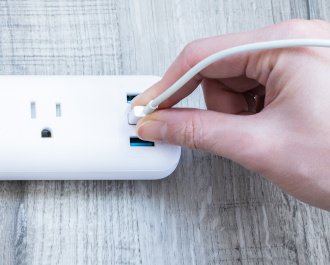
Power surges can be surprisingly sneaky. They might come from a lightning strike, a downed power line, or even heavy machinery running nearby. These sudden bursts of electricity can wreak havoc on your beloved appliances, leaving them fried and useless. So how do you protect them? Let’s dive into the world of power surges and explore some practical methods to keep your appliances safe and sound.
Understanding Power Surges
Before we jump into protective measures, it’s important to understand what a power surge is. In simple terms, a power surge is a sudden increase in electrical voltage that lasts for a short amount of time. Think of it like a tidal wave: it rises quickly and can crash down with a lot of force.
Surges can occur for various reasons. For instance, when the electrical grid changes or when too much demand is placed on it, that’s when surges happen. Even small events, like switching on a heavy appliance, can cause a temporary surge. If you’ve ever noticed your lights flickering or dimming when you turn on a vacuum cleaner, you’ve witnessed a minor surge.
Why Protecting Appliances Is Essential
You might be wondering why you should care about protecting your appliances from power surges. Well, here’s the thing: appliances aren’t just expensive; they hold your day-to-day convenience in their circuits. Losing a refrigerator, washer, or even your favorite coffee maker can throw a wrench in your lifestyle.
Moreover, the cost of repairs or replacements can quickly add up. An unexpected surge can damage components like circuit boards, motors, and sensors—parts that are often expensive to fix. By taking a few simple steps to protect your devices, you can save yourself the hassle and expense and keep everything running smoothly.
Using Surge Protectors: Your First Line of Defense
One of the most straightforward ways to protect your appliances is to invest in surge protectors. Think of these as little bodyguards for your electronics. They work by diverting excess voltage away from your devices, preventing damage.
When choosing a surge protector, look for these features:
- Joule Rating: This measures how much energy the surge protector can absorb. The higher the joule rating, the better. Aim for at least 1,000 joules for basic protection.
- Response Time: A good surge protector should act quickly—within nanoseconds—to protect your devices.
- Thermal Fuse: This is a safety feature that cuts the surge protector off if it overheats, preventing fire hazards.
Place surge protectors on all major appliances, and don’t forget your electronics like TVs and computers! Just make sure it’s rated for the devices you want to use it with, for optimal protection.
Whole-House Surge Protection: A Comprehensive Approach
If you want to take your safety measures to the next level, consider whole-house surge protection. This is like putting a fortress around your home’s electrical system. Installed at your main electrical panel, a whole-house surge protector can absorb major spikes before they reach your appliances.
These systems are ideal for those living in areas prone to frequent storms or power fluctuations, like in Nashville (zip code 37203). While they might be more expensive upfront than plug-in protectors, they offer incredible peace of mind. Plus, they protect all devices connected to your home’s wiring, giving you all-around safety.
Installing one usually requires a licensed electrician, but it’s well worth the investment if you’re serious about safeguarding your appliances.
Regular Maintenance and Electrical Inspections
Just like you wouldn’t skip your car’s oil change, your home needs regular check-ups too. A malfunctioning electrical system can heighten the risk of surges, so routine maintenance and inspections are essential.
Consider scheduling an electrical inspection every few years. An electrician can check for loose wires, overloaded circuits, and aging components—issues that can make your home more vulnerable to power surges. You might be surprised to learn that many electrical problems that lead to surges can be fixed easily with routine maintenance.
Additionally, remember to unplug appliances during storms or when you know a power outage is coming. This simple act can save you from a surge sneaking in during a weather event.
Investing in Quality Appliances
While it may seem more obvious, investing in quality appliances can play a significant role in surge protection. Cheaper devices might not have the best built-in surge protection features, making them more susceptible to damage.
When shopping for new appliances, look for models that have a solid reputation for durability and built-in surge protection features. You might pay a bit more upfront, but you can save money in the long run by avoiding repairs and replacements. Plus, many high-quality models come with warranties that provide additional peace of mind.
Power surges are a silent yet powerful threat to your home appliances, but the good news is that there are simple, effective ways to protect them. By using quality surge protectors, considering whole-house systems, maintaining your electrical system, and investing in quality appliances, you can keep your devices safe and extend their lifespan.
So, next time you see a storm brewing or hear about a power issue nearby, you’ll be prepared. Your appliances will be dancing to the rhythm of life, safe from those pesky surges lurking in the shadows.